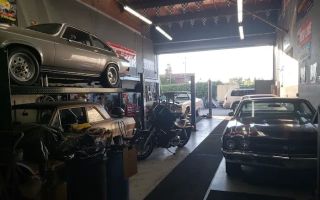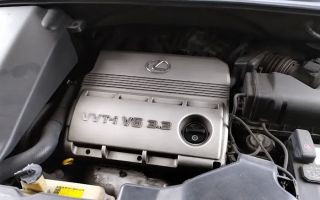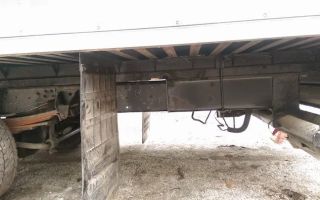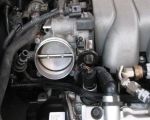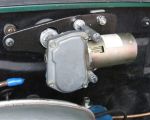How to Deal with a Faulty Car Battery
- Introduction
- Signs of a Faulty Battery
- Common Causes of Battery Failures
- How to Test Your Battery
- Steps to Take If Your Battery is Faulty
- Real-Life Examples of Battery Failures
- When to Call for Towing Assistance
- How to Choose the Right Roadside Assistance Service
- Conclusion
Experiencing a car battery failure is one of the most common and inconvenient issues that drivers face. A faulty battery can leave you stranded in the middle of your commute or at an inopportune moment. It’s essential to recognize the signs of a failing battery and take immediate action to avoid further complications. In this article, we will explore how to identify a faulty battery, how to test its health, and what steps to take to address the issue. We will also discuss how roadside assistance can help in such situations.
Signs of a Faulty Battery
Understanding the symptoms of a faulty battery is the first step in preventing further damage and avoiding being stuck on the road. Here are the most common signs that your battery may be failing:
- Slow Engine Crank: If your engine takes longer to start than usual or sounds like it’s struggling to turn over, it could indicate that your battery is weak or nearing the end of its life.
- Dim Lights: If the headlights or interior lights dim when you start the car or while driving, it’s a sign that the battery isn’t holding a charge properly.
- Check Engine Light: A warning light on your dashboard could also signal a battery issue. Some cars are equipped with an alert system for low battery voltage.
- Corrosion Around Terminals: If you notice white, ashy deposits around the battery terminals, it’s a sign of corrosion. Corrosion can affect the battery’s ability to properly charge and discharge.
- Old Battery: If your battery is over three years old, it may be time to replace it. Battery life varies, but most car batteries last between 3 to 5 years.
Common Causes of Battery Failures
There are several reasons why a car battery may fail, and identifying the root cause can help you avoid future issues. Some common causes include:
- Extreme Temperatures: Both hot and cold weather can reduce the lifespan of a car battery. Cold temperatures can slow down the chemical reaction inside the battery, while hot weather can cause the battery fluid to evaporate, leading to failure.
- Leaving Lights On: Accidentally leaving your headlights or interior lights on overnight can quickly drain your battery.
- Frequent Short Trips: If you often take short trips and don’t allow your battery to fully recharge, it can lead to gradual battery failure.
- Faulty Alternator: If your alternator isn’t working correctly, it can prevent your battery from being recharged while driving, leading to a drained or faulty battery.
How to Test Your Battery
If you suspect your battery is faulty, you can test it using a few simple methods:
- Use a Multimeter: A multimeter can help you check the voltage of your battery. If the battery voltage is lower than 12.6 volts, it might not be holding a charge properly.
- Load Test: A load test simulates the battery’s ability to perform under normal driving conditions. Many auto parts stores offer free battery testing, which includes a load test.
- Professional Diagnostics: A professional mechanic can use specialized equipment to check the health of your battery and alternator. This is especially helpful if you're unsure whether the issue is with the battery or another electrical component of the car.
Steps to Take If Your Battery is Faulty
If you determine that your battery is faulty, here are the next steps to take:
- Recharge or Jump Start: If the battery is simply drained, you can try jump-starting your car using jumper cables and a working vehicle. If the car starts, let it run for a while to recharge the battery.
- Replace the Battery: If your battery is old or has failed a load test, it’s time to replace it with a new one. Be sure to select a battery that’s the right size and specifications for your vehicle.
- Check the Alternator: If your battery is repeatedly draining or not holding a charge, the alternator may be the problem. Have a mechanic check the alternator to ensure it’s charging the battery properly.
Real-Life Examples of Battery Failures
Real-life examples help illustrate how common battery problems are and how they can be resolved:
- Case 1 – Cold Weather Battery Drain: Mark was driving in sub-zero temperatures when his car started having trouble starting. After getting the car tested, it turned out that the cold weather had caused his battery to fail. After replacing the battery, Mark didn’t have any further issues starting his car.
- Case 2 – Battery Drain After Leaving Lights On: Sarah accidentally left her headlights on overnight. The next morning, her car wouldn’t start. She called roadside assistance, and the technician was able to jump-start the car. However, the battery was already a few years old, so she replaced it with a new one to avoid further issues.
When to Call for Towing Assistance
If you’re unable to start your car due to a battery issue or if the battery is completely dead, you may need to call for towing assistance. A towing service can help you by transporting your car to a mechanic or auto repair shop where the battery or alternator can be properly diagnosed and replaced.
How to Choose the Right Roadside Assistance Service
When selecting a roadside assistance provider, consider the following factors:
- Availability: Ensure the service offers 24/7 availability, especially if you’re prone to car issues at night or during weekends.
- Services Provided: Check if the service covers battery jump-starts, lockouts, towing, and tire changes.
- Response Time: A good roadside assistance provider should be able to respond quickly, especially in emergency situations.
Conclusion
Dealing with a faulty car battery can be frustrating, but knowing how to test your battery and take action can help you avoid being stranded. If you’re unable to resolve the issue on your own, don’t hesitate to call for roadside assistance. For reliable and fast assistance, visit Rescue & Towing to learn more about how we can help you keep your vehicle running smoothly.


